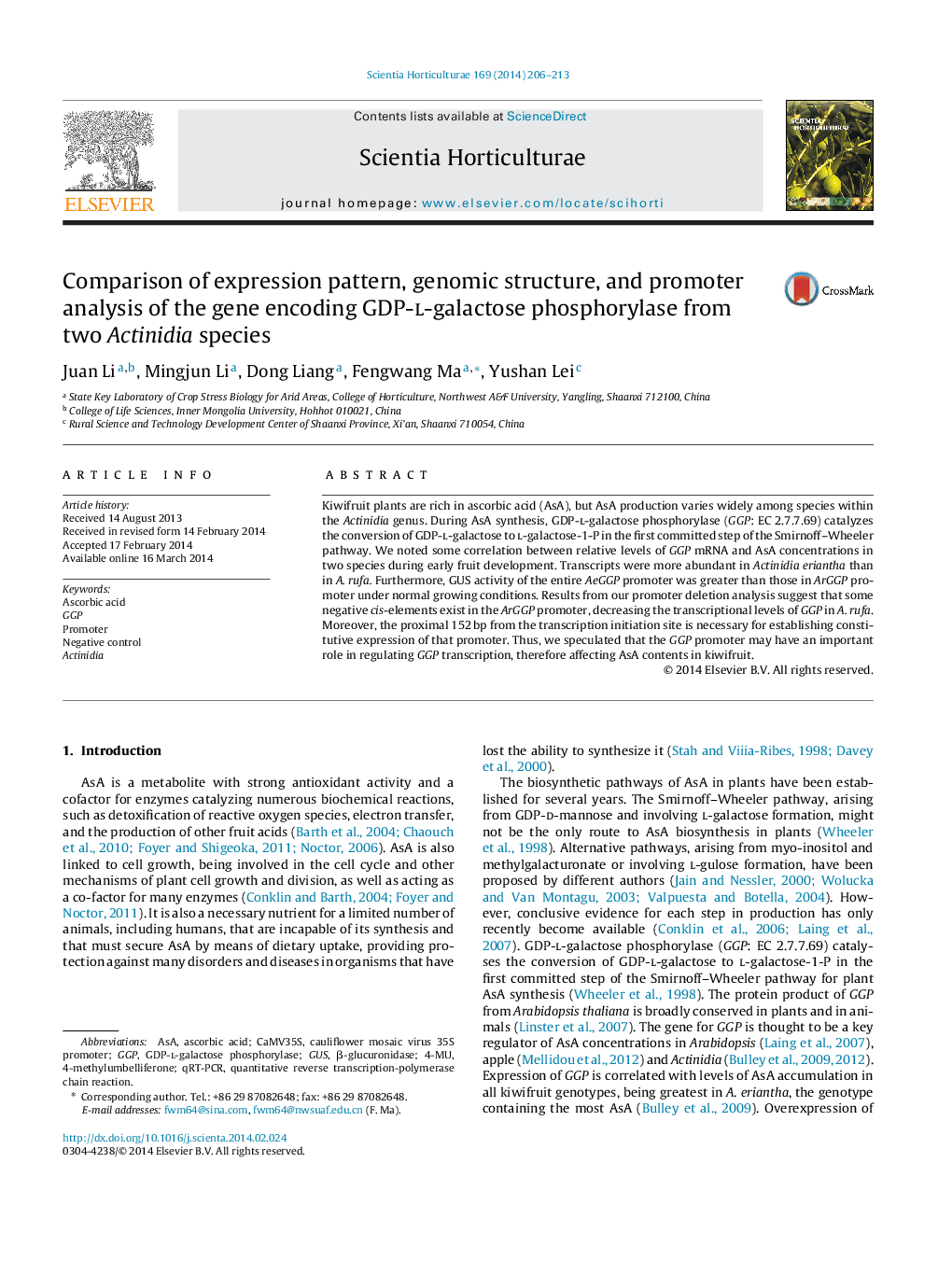| Article ID | Journal | Published Year | Pages | File Type |
|---|---|---|---|---|
| 4566879 | Scientia Horticulturae | 2014 | 8 Pages |
•Transcripts were more abundant in Actinidia eriantha than in A. rufa.•GUS activity of the entire AeGGP promoter was greater than that of ArGGP promoter.•Some negative cis-elements exist in the ArGGP promoter, decreasing the transcriptional levels of GGP in A. rufa.
Kiwifruit plants are rich in ascorbic acid (AsA), but AsA production varies widely among species within the Actinidia genus. During AsA synthesis, GDP-l-galactose phosphorylase (GGP: EC 2.7.7.69) catalyzes the conversion of GDP-l-galactose to l-galactose-1-P in the first committed step of the Smirnoff–Wheeler pathway. We noted some correlation between relative levels of GGP mRNA and AsA concentrations in two species during early fruit development. Transcripts were more abundant in Actinidia eriantha than in A. rufa. Furthermore, GUS activity of the entire AeGGP promoter was greater than those in ArGGP promoter under normal growing conditions. Results from our promoter deletion analysis suggest that some negative cis-elements exist in the ArGGP promoter, decreasing the transcriptional levels of GGP in A. rufa. Moreover, the proximal 152 bp from the transcription initiation site is necessary for establishing constitutive expression of that promoter. Thus, we speculated that the GGP promoter may have an important role in regulating GGP transcription, therefore affecting AsA contents in kiwifruit.
